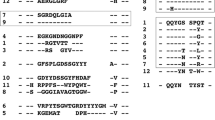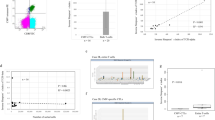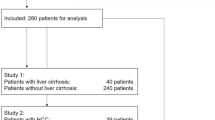Abstract
Killer cell immunoglobulin-like receptors (KIR) are highly polymorphic members of the immunoglobulin superfamily, which influence the response of natural killer cells and some T-lymphocyte subsets. Analysis of a cohort of previously human cytomegalovirus (HCMV)-negative patients, who developed primary HCMV infection following HCMV-positive renal transplant (n=76), revealed an increase in the frequency of KIR genes located on the telomeric region of B haplotypes (Tel B). The presence of Tel B in combination with the KIR ligand HLA-C2 was significantly more frequent in this subgroup. These genetic factors were associated with resistance to HCMV infection in a second cohort (n=65), where the Tel B genes KIR2DL5, -2DS1, 2DS5 and -3DS1 were all significantly associated with high viral loads. Furthermore, the KIR haplotype Tel A when in combination with the KIR ligand HLA-C1 was significantly protective against the development of severe infection. Our results suggest that KIR are a significant factor in the control of primary HCMV infection, and that determination of KIR gene repertoire may help in detection of renal transplant patients who were most at risk.
This is a preview of subscription content, access via your institution
Access options
Subscribe to this journal
Receive 6 digital issues and online access to articles
$119.00 per year
only $19.83 per issue
Buy this article
- Purchase on Springer Link
- Instant access to full article PDF
Prices may be subject to local taxes which are calculated during checkout





Similar content being viewed by others
References
Lopez-Botet M, Angulo A, Guma M . Natural killer cell receptors for major histocompatibility complex class I and related molecules in cytomegalovirus infection. Tissue Antigens 2004; 63: 195–203.
Wilkinson GW, Tomasec P, Stanton RJ, Armstrong M, Prod'homme V, Aicheler R et al. Modulation of natural killer cells by human cytomegalovirus. J Clin Virol 2008; 41: 206–212.
Cheent K, Khakoo SI . Natural killer cells: integrating diversity with function. Immunology 2009; 126: 449–457.
Shilling HG, Guethlein LA, Cheng NW, Gardiner CM, Rodriguez R, Tyan D et al. Allelic polymorphism synergizes with variable gene content to individualize human KIR genotype. J Immunol 2002; 168: 2307–2315.
Uhrberg M, Valiante NM, Shum BP, Shilling HG, Lienert-Weidenbach K, Corliss B et al. Human diversity in killer cell inhibitory receptor genes. Immunity 1997; 7: 753–763.
Wilson MJ, Torkar M, Trowsdale J . Genomic organization of a human killer cell inhibitory receptor gene. Tissue Antigens 1997; 49: 574–579.
Cooley S, Weisdorf DJ, Guethlein LA, Klein JP, Wang T, Le CT et al. Donor selection for natural killer cell receptor genes leads to superior survival after unrelated transplantation for acute myelogenous leukemia. Blood 2010; 116: 2411–2419.
Hiby SE, Apps R, Sharkey AM, Farrell LE, Gardner L, Mulder A et al. Maternal activating KIRs protect against human reproductive failure mediated by fetal HLA-C2. J Clin Invest 2010; 120: 4102–4110.
Lee SH, Girard S, Macina D, Busa M, Zafer A, Belouchi A et al. Susceptibility to mouse cytomegalovirus is associated with deletion of an activating natural killer cell receptor of the C-type lectin superfamily. Nat Genet 2001; 28: 42–45.
Brown MG, Dokun AO, Heusel JW, Smith HR, Beckman DL, Blattenberger EA et al. Vital involvement of a natural killer cell activation receptor in resistance to viral infection. Science 2001; 292: 934–937.
Daniels KA, Devora G, Lai WC, O'Donnell CL, Bennett M, Welsh RM . Murine cytomegalovirus is regulated by a discrete subset of natural killer cells reactive with monoclonal antibody to Ly49H. J Exp Med 2001; 194: 29–44.
D'Andrea A, Chang C, Franz-Bacon K, McClanahan T, Phillips JH, Lanier LL . Molecular cloning of NKB1. A natural killer cell receptor for HLA-B allotypes. J Immunol 1995; 155: 2306–2310.
Gumperz JE, Litwin V, Phillips JH, Lanier LL, Parham P . The Bw4 public epitope of HLA-B molecules confers reactivity with natural killer cell clones that express NKB1, a putative HLA receptor. J Exp Med 1995; 181: 1133–1144.
Lanier LL, Gumperz JE, Parham P, Melero I, Lopez-Botet M, Phillips JH . The NKB1 and HP-3E4 NK cells receptors are structurally distinct glycoproteins and independently recognize polymorphic HLA-B and HLA-C molecules. J Immunol 1995; 154: 3320–3327.
Litwin V, Gumperz J, Parham P, Phillips JH, Lanier LL . NKB1: a natural killer cell receptor involved in the recognition of polymorphic HLA-B molecules. J Exp Med 1994; 180: 537–543.
Wagtmann N, Rajagopalan S, Winter CC, Peruzzi M, Long EO . Killer cell inhibitory receptors specific for HLA-C and HLA-B identified by direct binding and by functional transfer. Immunity 1995; 3: 801–809.
Mandelboim O, Reyburn HT, Vales-Gomez M, Pazmany L, Colonna M, Borsellino G et al. Protection from lysis by natural killer cells of group 1 and 2 specificity is mediated by residue 80 in human histocompatibility leukocyte antigen C alleles and also occurs with empty major histocompatibility complex molecules. J Exp Med 1996; 184: 913–922.
Stewart CA, Laugier-Anfossi F, Vely F, Saulquin X, Riedmuller J, Tisserant A et al. Recognition of peptide-MHC class I complexes by activating killer immunoglobulin-like receptors. Proc Natl Acad Sci USA 2005; 102: 13224–13229.
Mengelle C, Pasquier C, Rostaing L, Sandres-Saune K, Puel J, Berges L et al. Quantitation of human cytomegalovirus in recipients of solid organ transplants by real-time quantitative PCR and pp65 antigenemia. J Med Virol 2003; 69: 225–231.
Piiparinen H, Hockerstedt K, Gronhagen-Riska C, Lappalainen M, Suni J, Lautenschlager I . Comparison of plasma polymerase chain reaction and pp65-antigenemia assay in the quantification of cytomegalovirus in liver and kidney transplant patients. J Clin Virol 2001; 22: 111–116.
van den Berg AP, van der Bij W, van Son WJ, Anema J, van der Giessen M, Schirm J et al. Cytomegalovirus antigenemia as a useful marker of symptomatic cytomegalovirus infection after renal transplantation—a report of 130 consecutive patients. Transplantation 1989; 48: 991–995.
Garrigue I, Boucher S, Couzi L, Caumont A, Dromer C, Neau-Cransac M et al. Whole blood real-time quantitative PCR for cytomegalovirus infection follow-up in transplant recipients. J Clin Virol 2006; 36: 72–75.
Gouarin S, Vabret A, Gault E, Petitjean J, Regeasse A, Hurault de Ligny B et al. Quantitative analysis of HCMV DNA load in whole blood of renal transplant patients using real-time PCR assay. J Clin Virol 2004; 29: 194–201.
Guiver M, Fox AJ, Mutton K, Mogulkoc N, Egan J . Evaluation of CMV viral load using TaqMan CMV quantitative PCR and comparison with CMV antigenemia in heart and lung transplant recipients. Transplantation 2001; 71: 1609–1615.
Li H, Dummer JS, Estes WR, Meng S, Wright PF, Tang YW . Measurement of human cytomegalovirus loads by quantitative real-time PCR for monitoring clinical intervention in transplant recipients. J Clin Microbiol 2003; 41: 187–191.
Vilches C, Rajalingam R, Uhrberg M, Gardiner CM, Young NT, Parham P . KIR2DL5, a novel killer-cell receptor with a D0-D2 configuration of Ig-like domains. J Immunol 2000; 164: 5797–5804.
Gomez-Lozano N, Gardiner CM, Parham P, Vilches C . Some human KIR haplotypes contain two KIR2DL5 genes: KIR2DL5A and KIR2DL5B. Immunogenetics 2002; 54: 314–319.
Yusa S, Catina TL, Campbell KS . KIR2DL5 can inhibit human NK cell activation via recruitment of Src homology region 2-containing protein tyrosine phosphatase-2 (SHP-2). J Immunol 2004; 172: 7385–7392.
Prod'homme V, Griffin C, Aicheler RJ, Wang EC, McSharry BP, Rickards CR et al. The human cytomegalovirus MHC class I homolog UL18 inhibits LIR-1+ but activates LIR-1- NK cells. J Immunol 2007; 178: 4473–4481.
van Duin D, Avery RK, Hemachandra S, Yen-Lieberman B, Zhang A, Jain A et al. KIR and HLA interactions are associated with control of primary CMV infection in solid organ transplant recipients. Am J Transplant 2014; 14: 156–162.
Chen C, Busson M, Rocha V, Appert ML, Lepage V, Dulphy N et al. Activating KIR genes are associated with CMV reactivation and survival after non-T-cell depleted HLA-identical sibling bone marrow transplantation for malignant disorders. Bone Marrow Transplant 2006; 38: 437–444.
Cook M, Briggs D, Craddock C, Mahendra P, Milligan D, Fegan C et al. Donor KIR genotype has a major influence on the rate of cytomegalovirus reactivation following T-cell replete stem cell transplantation. Blood 2006; 107: 1230–1232.
Kiani A, Rao A, Aramburu J . Manipulating immune responses with immunosuppressive agents that target NFAT. Immunity 2000; 12: 359–372.
Hadaya K, de Rham C, Bandelier C, Bandelier C, Ferrari-Lacraz S, Jendly S et al. Natural killer cell receptor repertoire and their ligands, and the risk of CMV infection after kidney transplantation. Am J Transplant 2008; 8: 2674–2683.
Stern M, Elsasser H, Honger G, Steiger J, Schaub S, Hess C . The number of activating KIR genes inversely correlates with the rate of CMV infection/reactivation in kidney transplant recipients. Am J Transplant 2008; 8: 1312–1317.
Price P, Witt C, de Santis D, French MA . Killer immunoglobulin-like receptor genotype may distinguish immunodeficient HIV-infected patients resistant to immune restoration diseases associated with herpes virus infections. J Acquir Immune Defic Syndr 2007; 45: 359–361.
Carrington M, Wang S, Martin MP, Gao X, Schiffman M, Cheng J et al. Hierarchy of resistance to cervical neoplasia mediated by combinations of killer immunoglobulin-like receptor and human leukocyte antigen loci. J Exp Med 2005; 201: 1069–1075.
Kearns AM, Guiver M, James V, King J . Development and evaluation of a real-time quantitative PCR for the detection of human cytomegalovirus. J Virol Methods 2001; 95: 121–131.
Kraft CS, Armstrong WS, Caliendo AM . Interpreting quantitative cytomegalovirus DNA testing: understanding the laboratory perspective. Clin Infect Dis 2012; 54: 1793–1797.
Hughes D, Hafferty J, Fulton L, Friend P, Devaney A, Loke J et al. Donor and recipient CMV serostatus and antigenemia after renal transplantation: an analysis of 486 patients. J Clin Virol 2008; 41: 92–95.
Jones DC, Edgar RS, Ahmad T, Cummings JR, Jewell DP, Trowsdale J et al. Killer Ig-like receptor (KIR) genotype and HLA ligand combinations in ulcerative colitis susceptibility. Genes Immun 2006; 7: 576–582.
Jiang W, Johnson C, Jayaraman J, Simecek N, Noble J, Moffatt MF et al. Copy number variation leads to considerable diversity for B but not A haplotypes of the human KIR genes encoding NK cell receptors. Genome Res 2012; 22: 1845–1854.
Bunce M, O'Neill CM, Barnardo MC, Krausa P, Browning MJ, Morris PJ et al. Phototyping: comprehensive DNA typing for HLA-A, B, C, DRB1, DRB3, DRB4, DRB5 & DQB1 by PCR with 144 primer mixes utilising sequence-specific primers (PCR-SSP). Tissue Antigens 1995; 46: 355–367.
Vandenbussche CJ, Mulrooney TJ, Frazier WR, Dakshanamurthy S, Hurley CK . Dramatically reduced surface expression of NK cell receptor KIR2DS3 is attributed to multiple residues throughout the molecule. Genes Immun 2008; 46: 355–367.
Maxwell LD, Wallace A, Middleton D, Curran MD . A common KIR2DS4 deletion variant in the human that predicts a soluble KIR molecule analogous to the KIR1D molecule observed in the rhesus monkey. Tissue Antigens 2002; 60: 254–258.
Acknowledgements
This work was funded by Leukaemia Research UK (LRUK) and the Medical Research Council (MRC). CJT is supported by the NIHR Cambridge Biomedical Research Centre.
Author information
Authors and Affiliations
Corresponding author
Ethics declarations
Competing interests
The authors declare no conflict of interests.
Additional information
Supplementary Information accompanies this paper on Genes and Immunity website
Supplementary information
Rights and permissions
About this article
Cite this article
Jones, D., Peacock, S., Hughes, D. et al. Killer immunoglobulin-like receptor gene repertoire influences viral load of primary human cytomegalovirus infection in renal transplant patients. Genes Immun 15, 562–568 (2014). https://doi.org/10.1038/gene.2014.53
Received:
Revised:
Accepted:
Published:
Issue Date:
DOI: https://doi.org/10.1038/gene.2014.53
This article is cited by
-
The impact of HLA polymorphism on herpesvirus infection and disease
Immunogenetics (2023)
-
Evaluation of telomeric KIR genes and their association with CMV infection in kidney transplant recipients
Immunogenetics (2022)
-
qKAT: a high-throughput qPCR method for KIR gene copy number and haplotype determination
Genome Medicine (2016)
-
Rapid reconstitution of CD4 T cells and NK cells protects against CMV-reactivation after allogeneic stem cell transplantation
Journal of Translational Medicine (2016)
-
High prevalence of specific KIR types in patients with HHV-8 positive cutaneous vascular lesions: a possible predisposing factor?
Archives of Dermatological Research (2016)



